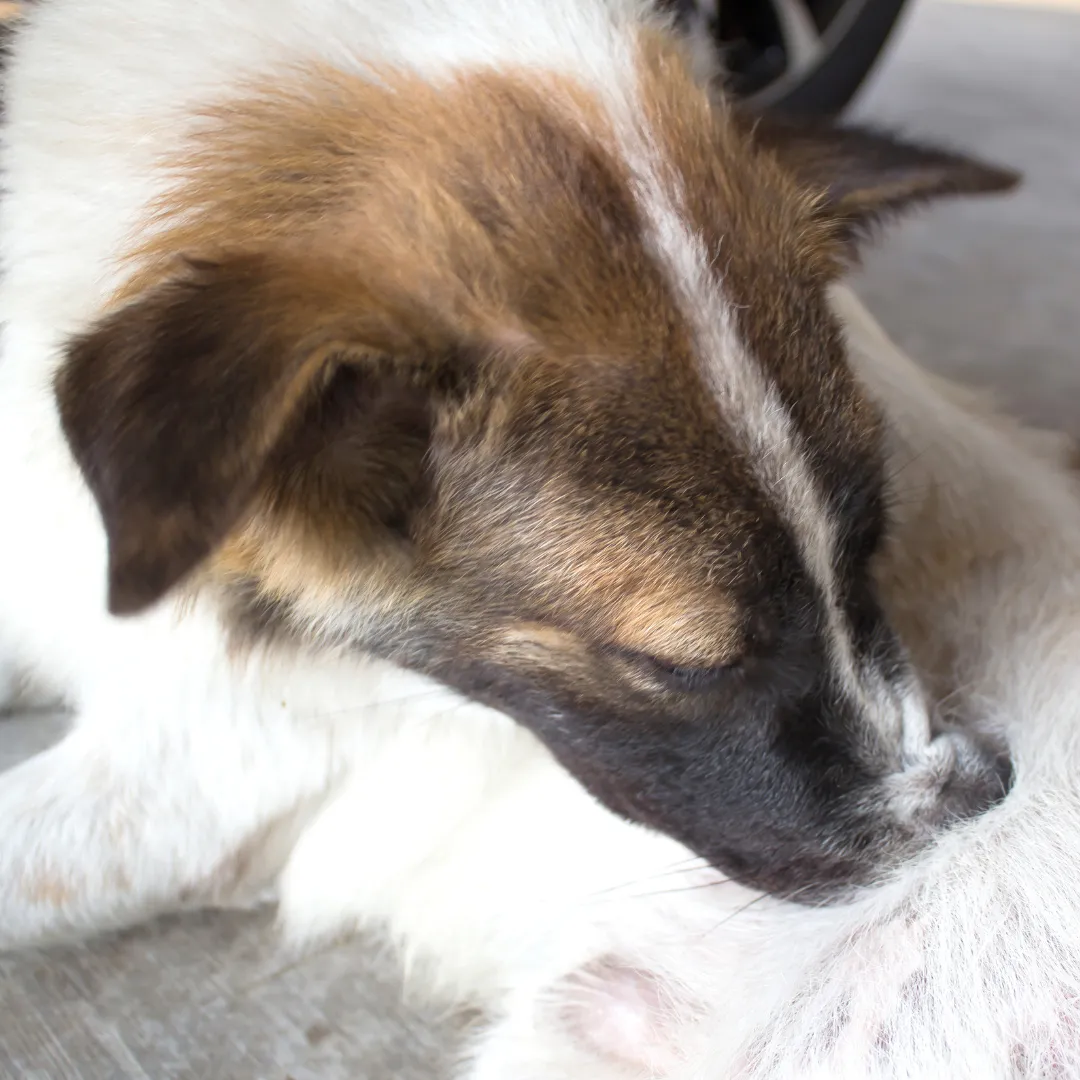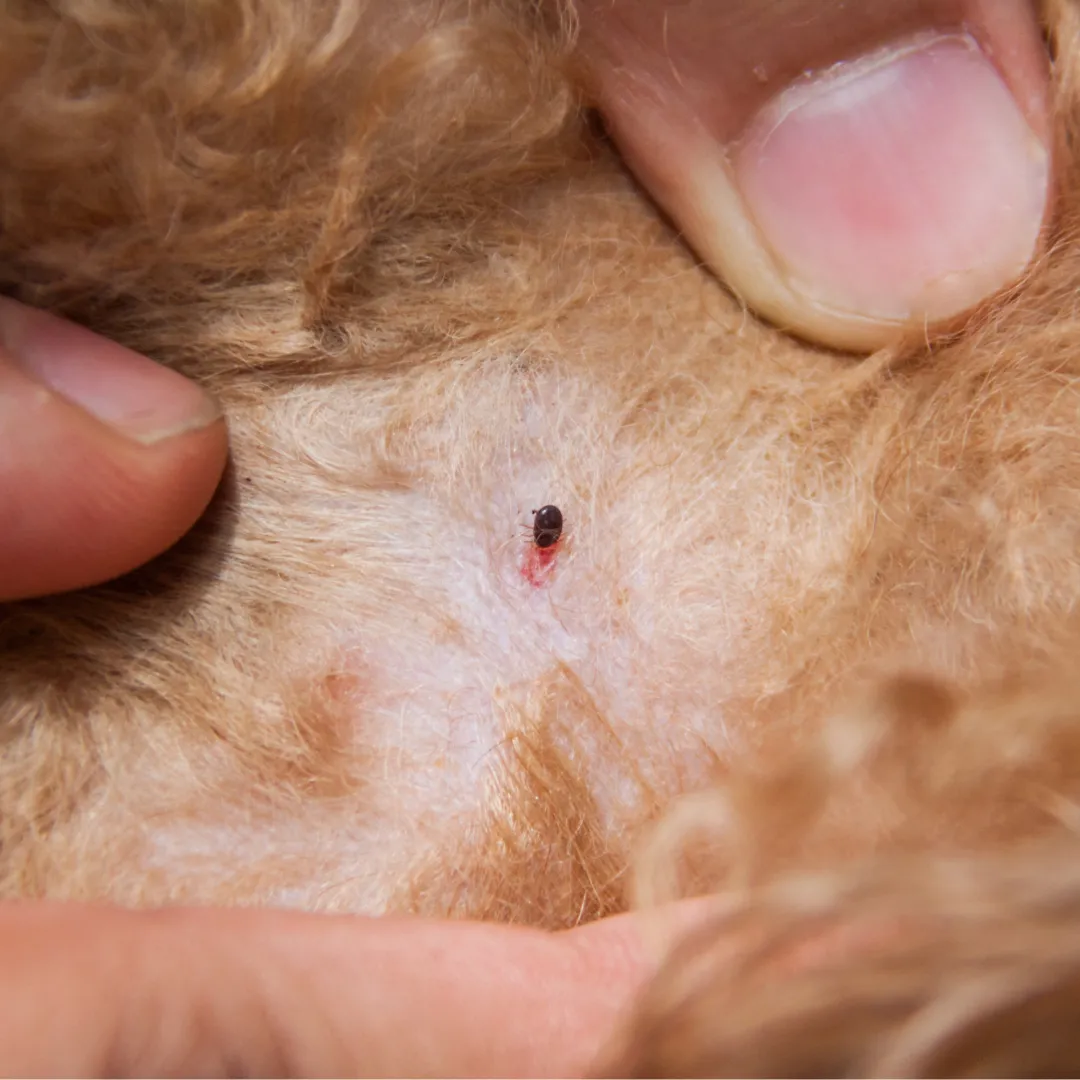Fleas are a persistent nuisance, more prevalent than many dog owners realize. These tiny parasites can cause significant distress to our canine companions, often leading to frequent vet visits. Their rapid reproduction cycle and ability to hide in nearly every corner of your home and yard make them a formidable foe. As soon as they come into contact with a dog, they quickly attach themselves to feed on blood, leading to irritation and discomfort. While numerous flea treatments are available, many contain harsh chemicals that can be detrimental to your dog’s health or the environment. This article provides a comprehensive guide to the most effective natural flea treatments for dogs, with a special focus on creating a potent Homemade Flea Spray For Dogs, ensuring you and your furry friend can enjoy a truly flea-free environment. Prioritizing your dog’s overall well-being and health, including their joint health, is crucial for a happy life, much like ensuring they receive adequate supplements such as liquid health glucosamine for dogs.
Recognizing Flea Infestation in Your Dog
Identifying a flea infestation early is key to effective treatment. Flea bites typically cause intense irritation and excessive itching. If you observe your dog scratching, biting, or licking themselves more frequently than usual, or if you notice bumps on their skin, redness, or significant hair loss, it’s highly probable that fleas are the culprit.
 Dog scratching and biting its fur due to flea irritation
Dog scratching and biting its fur due to flea irritation
Beyond immediate discomfort, fleas can lead to more serious health issues. Flea allergy dermatitis (FAD) is the most common allergic skin disease in pets, triggered by flea saliva. Ingesting fleas, often during grooming, can also transmit tapeworms. In severe cases, especially in puppies or elderly dogs, a heavy flea burden can cause anemia due to significant blood loss. Furthermore, diseases like Bartonellosis, caused by the Bartonella bacteria, have been linked to fleas, potentially leading to symptoms such as nausea, fever, an irregular heartbeat, and loss of appetite in affected dogs. Understanding these signs and potential risks underscores the importance of prompt and effective flea management.
Where Fleas Thrive Across the US
Fleas are highly adaptable, but they generally flourish in warm, humid climates. They prefer temperatures ranging between 70 – 85°F (21 – 29°C) and approximately 70% humidity, as reported by PetMD. This preference explains why certain regions experience year-round flea challenges. Conversely, fleas are not fond of direct exposure to sunlight, a characteristic that can be strategically used in preventative measures against these persistent parasites.
A 2012 study by Banfield Pet Hospital highlighted several states as particularly prone to flea infestations. These included Alabama, Florida, Georgia, Louisiana, Oregon, South Carolina, Texas, and Washington. Dogs in these states are more likely to encounter fleas throughout the year. In contrast, states like Arizona and Utah tend to have significantly lower flea populations due to their drier climates. Recognizing these geographical patterns can help dog owners in affected areas remain vigilant and proactive in their flea prevention efforts.
Natural Remedies for Fleas on Dogs, Including DIY Sprays
The good news for pet owners is that there are numerous ways to combat fleas without resorting to harsh chemicals. From invigorating baths and specialized dips to topical rubs and even custom collars, a range of home remedies and natural flea treatments are available for dogs of every temperament. Maintaining your dog’s overall health, including joint support, can contribute to their resilience against various stressors, similar to the benefits of products like nutramax dasuquin with msm for large dogs.
Apple Cider Vinegar: A Powerful Homemade Flea Spray
Apple cider vinegar (ACV) stands out as one of the most effective natural flea remedies, offering a chemical-free approach to flea control. Fleas are averse to acidic environments, and ACV’s acidic nature helps to rebalance the pH levels of your dog’s skin and fur, creating an unwelcoming habitat for these parasites without adverse effects on your pet.
You can utilize apple cider vinegar as an excellent homemade flea spray for dogs or even incorporate it into their drinking water. To prepare a simple yet powerful spray, combine six cups of apple cider vinegar with four cups of water. For an added boost, you can include a pinch of sea salt. Pour this mixture into a spray bottle, shake it thoroughly, and then generously mist your dog’s entire coat, taking care to avoid their eyes. This natural solution helps repel existing fleas and can deter new ones from latching on.
For internal benefits, consider adding a couple of spoons of apple cider vinegar (or any other type of vinegar) to your dog’s drinking water. This can assist in eliminating any fleas your dog might have ingested during grooming. Always introduce a small amount initially to ensure your dog accepts it and doesn’t become discouraged from drinking water.
Lemon: A Zesty Solution for Flea Control
Similar to apple cider vinegar, lemon serves as another fantastic natural flea remedy. This highly acidic fruit is beneficial for your dog while being a definite deterrent for fleas. Lemons are readily available, easy to prepare, and leave a pleasant, citrusy fragrance on your dog’s coat.
You can prepare a refreshing lemon bath by mixing half a cup of freshly squeezed lemon juice with two cups of water. Add this mixture to your dog’s regular bathwater, then wash your canine companion using your preferred natural pet soap or shampoo. The lemon’s acidity will help repel fleas during the bath.
Alternatively, for a quick application, you can dip your dog’s comb in pure lemon juice and carefully brush through their fur. If your dog has very short hair or is hairless, a cloth soaked in lemon juice can be used to wipe them all over, achieving the same repellent effect.
Another innovative use for lemon is to create a household homemade flea spray for dogs and soft furnishings. Boil several thin lemon slices in water and allow the mixture to cool overnight. The next day, transfer this solution into a spray bottle and mist it over carpets, pet bedding, and other upholstered items where fleas might be hiding. This provides a natural and refreshing way to keep your home flea-free.
 Close-up view of a tiny flea on a dog's fur
Close-up view of a tiny flea on a dog's fur
Essential Oils: Potent Repellents with Caution
Essential oils have long been valued for their therapeutic properties in humans, and many are also remarkably effective against fleas in pets. Certain essential oils act as powerful repellents, while others possess properties strong enough to kill fleas on contact.
Given their concentrated nature, essential oils can be dangerous if applied directly to your dog’s skin or if ingested. Therefore, it is absolutely crucial to always dilute them with a suitable carrier oil, such as coconut oil, avocado oil, or another preferred carrier oil. Alternatively, you can dilute them with water in a glass spray bottle, shaking well before each use. Never add essential oils to your dog’s drinking water under any circumstances.
Some essential oils known for their efficacy in repelling fleas include lavender essential oil, rose geranium essential oil, lemongrass, and rosemary essential oil. To create a diluted homemade flea spray for dogs, add a few drops of your chosen essential oil to your dog’s natural shampoo or mix it with water and a carrier oil in a glass spray bottle. Apply this mixture sparingly to the back of your dog’s neck, being extremely careful to avoid their eyes and ears. It is vital to ensure that the application area is not easily accessible for your dog to lick, as ingesting certain essential oils can lead to stomach upset or, in more severe cases, toxicity. Remember, a small amount goes a long way due to their potency.
Another method involves creating a lavender or cedar oil collar. Dip a homemade or store-bought collar into water containing a few drops of the chosen essential oil, let it air dry completely, and then place it on your dog. This provides a sustained repellent effect.
Coconut Oil and Neem Oil: Versatile Natural Treatments
Continuing with the subject of natural oils, coconut oil offers a dual benefit for your dog. Rubbing a small amount of coconut oil over your dog’s coat not only acts as a natural flea repellent but also imparts a shiny, luxurious finish to their fur. Unlike some essential oils, coconut oil is safe for ingestion. You can safely add a small quantity to your dog’s food, where it can act as an antibacterial treatment, supporting overall gut health.
Neem oil is another excellent natural option for flea management. When mixed with water and sprayed onto affected areas, it can help reduce itchiness and irritation caused by flea bites. While neem oil is generally considered non-toxic if ingested, it possesses a strong, bitter taste that most dogs find unpleasant, which naturally deters them from licking extensively. Ensuring your dog’s bone and joint health, especially in larger breeds, can also be a proactive measure in maintaining their overall comfort, much like consistent supplementation with products such as dasuquin with msm for large dogs 150 chewable tablets.
 Collection of natural ingredients like lemons and herbs for flea treatments
Collection of natural ingredients like lemons and herbs for flea treatments
Natural Baths and Dips for Flea Removal
For dogs that enjoy water, natural baths and dips are highly effective methods for removing fleas. You can use organic soaps and natural shampoos specifically formulated for pets to cleanse your dog’s coat thoroughly. For an added boost of flea-repelling power, consider adding a few drops of an appropriate essential oil (following dilution guidelines) to the shampoo or bathwater.
A rosemary dip provides a fun and effective treatment option. Begin by steeping fresh rosemary leaves in boiling water for several minutes. Strain the liquid to remove the leaves, then dilute the concentrated rosemary water with warm water until it reaches a comfortable, non-scalding temperature for your dog. Allow your dog to splash and soak in this herbal treatment. The rosemary acts as a natural repellent and can help soothe irritated skin. Always supervise your pup during this process to ensure they do not drink the dip.
Comprehensive Flea Prevention in Your Home and Yard
Treating your dog for fleas is only half the battle. If your dog has fleas, it’s highly probable that your home and yard have become secondary breeding grounds for these resilient pests. Implementing natural environmental control methods is crucial to preventing re-infestation.
DIY Flea Traps
A simple yet effective way to manage fleas in your indoor environment is by setting up a homemade flea trap. Place a shallow bowl filled with warm water and a small amount of dishwashing soap on the floor, especially in areas where your dog frequently rests. The dish soap reduces the water’s surface tension, making it a “sticky” trap for fleas. Fleas are attracted to the warmth and light (if placed near a night light), jump into the water, and become trapped. In the morning, dispose of the water and thoroughly clean the bowl.
Diatomaceous Earth: A Natural Desiccant
Diatomaceous earth (DE) is a remarkable natural flea treatment derived from the fossilized remains of ancient algae. This fine, white, powdery substance works by physically dehydrating and abrading the exoskeletons of fleas and their eggs, effectively preventing further infestation. To use, sprinkle an even, thin layer of food-grade diatomaceous earth over your carpets, rugs, and hard floors, paying close attention to areas your dog frequents, such as pet beds and favorite lounging spots. Leave the DE undisturbed for approximately 48 hours (blocking off the area if necessary), then vacuum it up thoroughly. This natural flea and tick treatment is an essential step in dealing with an active infestation and should not be overlooked.
Steam Cleaning for a Flea-Free Home
Water-based vacuums and steam cleaners are highly effective tools for flea prevention and eradication within your home. These devices work by drowning adult fleas and flushing out microscopic flea eggs, larvae, and pupae hidden deep within carpets and upholstery. Steam cleaning, in particular, utilizes high temperatures to kill fleas at all life stages. Beyond flea removal, steam cleaning also eliminates dust, allergens, and odors, leaving your home smelling fresh, looking clean, and most importantly, free of fleas.
 Steam cleaner being used on a carpet, effectively removing dirt and fleas
Steam cleaner being used on a carpet, effectively removing dirt and fleas
Maintaining a Flea-Resistant Yard
Your outdoor space can easily become a prime breeding ground for fleas if not properly maintained. To prevent yard-based flea infestations, it’s essential to regularly clear out any dead plants, fallen leaves, and weeds from your grass and garden beds. Maintaining a tidy yard minimizes hiding spots for fleas. Additionally, research and plant flea-repellent plants that thrive in your local climate. Varieties such as lavender, spearmint, and lemongrass are known for their natural repellent properties and can create a more hostile environment for fleas in your yard.
Harnessing the Power of Sunshine
Fleas are highly sensitive to light and prefer dark, shaded, and moist environments. Maximizing natural sunlight penetration into your home can be a simple yet effective deterrent. Open curtains and blinds to allow as much sunshine as possible to flood living spaces. Outdoors, clearing out dense vegetation and dead plants not only removes hiding spots but also allows sunlight to reach the ground, making it significantly harder for fleas to survive and reproduce in your grass and garden.
There is a diverse array of natural flea treatments available for dogs, many of which are gentle alternatives to chemical-laden products. Because they lack heavy chemicals, these natural remedies, including various homemade flea spray for dogs formulations, may take slightly longer to show full results compared to conventional chemical sprays. For dogs with severe flea allergies or chronic infestations, stronger chemical treatments might be necessary, and consultation with a veterinarian is always recommended. However, for most dogs, these natural, holistic approaches offer effective and safe ways to manage and prevent flea infestations.
References:
- PetMD. (n.d.). Fleas on Dogs and What You Can Do About Them. Retrieved from https://www.petmd.com/dog/care/evr_dg_fleas_on_dogs_and_what_you_can_do_about_them
- Banfield Pet Hospital. (n.d.). Official Website. Retrieved from http://www.banfield.com/
